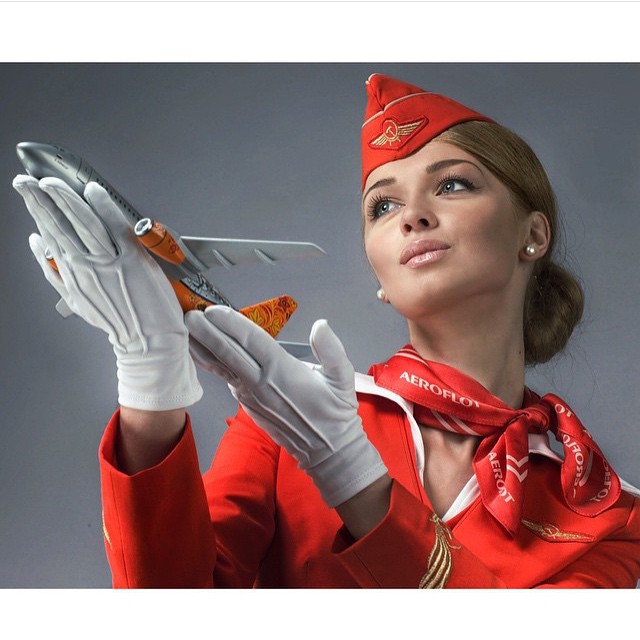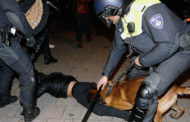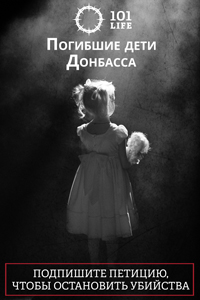Russia and Ukraine will completely terminate all air connections with each other as of October 25 following Ukraine’s decision to close its airspace to all Russian aircraft, including direct and transit flights. Astonishment and disbelief was the Kremlin’s first reaction. “Judging from experience of the past 20 months, we cannot exclude a hypothetical possibility of such acts of insanity,” Kremlin Spokesman Dmitry Peskov said.
Alarming Signal
The first alarming signal indicating that Kiev was nurturing an idea of aviation sanctions was a sanctions list that appeared on President Poroshenko’s website late on September 16. It comprised 388 individuals and 105 legal entities, including Russian companies, banks and defense enterprises; as well as Russia’s national air carrier Aeroflot and another 20 Russian air companies, which had been banned, partly or completely, from making direct and transit flights and transporting cargoes over the territory of Ukraine. The document contained plenty of mistakes and was openly absurd. Finally, it was removed from the website to be finalized.
But the idea of air sanctions did not disappear together with the list.
Yatsenyuk takes aim at the sky
Nine days later, on September 25, Ukraine’s Prime Minister Arseniy Yatsenyuk announced that Ukraine was closing its airspace to Russian aircraft.” “Following a decision by Ukraine’s National Security and Defense Council, the Ukrainian government bans direct flights by Russian air companies. The cabinet of ministers also forbids Russian air companies to make transit flights via the territory of Ukraine if they carry goods meant for military or dual purposes or Russian military personnel,” Yatsenyuk said in his statement in September.
Several hours later Ukraine’s Ministry of Infrastructure, which is directly responsible for such matters, confirmed the flight ban and announced October 25 as a concrete date when the ban was supposed to come into force. “On instruction from Prime Minister Arseniy Yatsenyuk Ukraine’s State Aviation Service started informing the Russian air companies included in the sanctions list that they would not receive licenses to fly to Ukrainian cities with the start of the 2015-2016 winter navigation season (i.e. as of October 25, 2015),” the Ministry of Infrastructure said.
Russia had to retaliate with mirror measures
Moscow’s initial surprise and disbelief soon gave way to habitual attempts of patient persuasion. However, later under the pressure of looming financial losses, Russia imposed retaliatory measures against Ukrainian air companies. On September 28, the Russian government issued an instruction to notify Ukraine’s air companies of a ban on using the Russian airspace as of October 25. The ban affected Ukraine’s three major air carriers: Ukraine International Airlines; Motor Sich and YanAir.
“In accordance with instructions received from Russian Prime Minister Dmitry Medvedev, the Russian Transport Ministry instructed Russia’s Federal Air Transport Agency (Rosaviatsiya) to notify Ukrainian air companies who are making or are planning to make flights to destinations in Russia that they will be forbidden to use the Russian airspace as of October 25,” the ministry said.
Kiev: What have we done?
Russia’s retaliatory measures were unexpected for Ukraine. An outrage in the local media preceded a special statement of Prime Minister Arseniy Yatsenyuk who explained that sanctions had been imposed on Russian air companies because of their illegal flights to Russian Crimea.
“The motivation behind the sanctions against Russian air companies is clear. They violated Ukraine’s airspace by illegally making flights to Ukrainian territory – to Crimea. Sanctions were applied to such companies, including Aeroflot,” Yatsenyuk told a government meeting.
According to his logic, Russia retaliated with its unfounded restrictive measures to Ukraine’s well-grounded and justified sanctions.
Air Traffic
The air traffic between Russia and Ukraine goes in several directions: from Moscow, St. Petersburg and Surgut. Five Russian air companies – Aeroflot, Transaero, Sibir, UTair and Rossiya – fly to Kiev, the capital of Ukraine, Odessa, the Black Sea coast, and Lvov in western Ukraine. In turn, Ukrainian air companies, including Dnepravia, Motor Sich and Ukraine International Airlines make flights from Kiev, Odessa, Zaporozhye and Dnepropetrovsk to Moscow, St. Petersburg and Russia’s westernmost enclave of Kaliningrad. The passenger traffic flow between the two countries stood at about 800,000 people in the first eight months of 2015.
“Unfortunately, the Kiev authorities’ ill-considered decision will deliver a hard and painful blow to Ukrainian nationals who make up more than 70% of passengers on all the fights between the two states, according to statistics provided by Russian air companies,” Russia’s Federal Air Transport Agency (Rosaviatsiya) said.
Flights with two transfers
The Ukrainian government’s “effective gesture” caused huge financial damage to the Ukrainian economy. The price of air tickets from Kiev to Moscow soared. Ukraine’s air infrastructure came under threat.
“Yes, prices will go up inevitably. It will be impossible to pick up all these passengers immediately because of insufficient resources in the flight market of other countries. We are considering a possibility of launching alternative flights via Minsk, Belarus, or Riga, Latvia. However, these countries have inter-governmental agreements with Russia that regulate the flight frequency, designated air carriers and the number of passengers,” Yevgeniya Statskaya, the press secretary of Ukraine International Airlines, Ukraine’s biggest air company, said.
According to her, the flight bans may result in job losses for the air companies’ employees. Naturally, revenues into Ukraine’s budget will also dwindle. Kiev’s airport /Zhulyany/ is going to lose 30% of its profits.
For its part, “Ukraerorukh”, a state enterprise servicing air traffic in Ukraine, may annually lose up to 150 million dollars, according to Ukraine’s Former Deputy Minister of Infrastructure Alexander Kava.
Though the losses of Russian air companies will be much less striking, they will still amount to tens of millions of dollars, Vladimir Tasun, President of Russian Air Transport Operator Association, said.
Rosaviatsiya started considering the negative scenario options in mid-October. “If no agreement is reached, the same Pobeda (low cost carrier) will have to fly Russian passengers to Minsk and take them further to Kiev by bus,” Tasun said. The Pobeda air company received Rosaviatsiya’s permit to fly to Minsk 14 times a week on October 20. However, the scheme had to be given up because of inconveniency for the passengers, the source explained.
“Those who usually chooses a plane will be unwilling to change to a bus,” Oleg Panteleyev, the editor of the AviaPort aviation portal, said. There is only one option left for those who are used to flying – transit flights to Kiev via Minsk, Chisinau and Istanbul. A Moscow-Minsk-Kiev transit flight will be at least four hours longer than a direct flight from Moscow to Kiev.
Unexpected Request
Like all the recent high-sounding initiatives of the Ukrainian authorities, the flight ban scenario unfolded according to an unexpected pattern. Several Ukrainian air companies asked Rosaviatsiya for permission to continue flights in the 2015-2016 winter navigation period. For example, Atlasjet Ukraine has asked for permission to make three flights: Kiev-Moscow; Odessa-Moscow and Kiev-St. Petersburg; UTair-Ukraine – on routes Kiev-Moscow and Lvov-Moscow.
Russia agreed to hold consultations in any place convenient for Ukraine
“We have sent three proposals on consultations – two from the Russian Transport Ministry and one from Rosaviatsiya – under an air traffic agreement, which contains a standard phrase that all disputes should be resolved through consultations between the aviation authorities. In this case, Ukraine made a decision without any prior consultations. That is why the first thing we did was to suggest holding consultations,” Russian Deputy Transport Minister Valery Okulov said.
Fruitless Consultations
The first consultations on resuming the air traffic took place in Brussels on October 23. Russia suggested lifting all the existing restrictions for direct and transit flights by Russian and Ukrainian air companies.
“The Ukrainian delegation will inform the Ukrainian leadership about Russia’s stance,” Ukraine’s Ministry of Infrastructure press service .
Initially, the sides were supposed to agree that at least one air carrier from each side or even two or three, if things went well, would make flights between the two countries. Russia’s Pobeda low cost air carrier could have received Rosaviatsiya’s permit to fly to Kiev and Odessa late in October.
However, the sides failed to reach an agreement on lifting the reciprocal bans, a TASS diplomatic source in Brussels said. “Apparently, for lack of relevant instructions the Ukrainian side was unable to have any meaningful discussions. In turn, it suggested considering the removal of reciprocal restrictions exclusively on transit flights,” Rosaviatsiya said.
“Despite the consultations, the sanctions will come into force in full measure on October 25. Therefore, there will be no air connections with Russian cities as of October 25,” Ukraine’s Minister of Infrastructure Andrei Pivovarovsky said.
Rails Instead of Wings
According to the Russian Railways Company, the sale of railway tickets for Ukrainian destinations has been on the rise ever since Ukraine and Russia announced their intention to terminate all air connections. “The sale of tickets for Ukraine has increased: for example, the number of sales for the Moscow-Kiev trains departing in November 2015 has increased 1.5 times since November 2014,” a Russian Railways Company representative told TASS.
Direct trains bound for Ukraine are not made up in Russia any longer. A Moscow-Chisinau train belonging to the Federal Passenger Company is the only Russian train, which crosses the territory of Ukraine. It stops in Kiev and several other towns and cities.
A total of 10-11 trains circulate daily between Russia and Ukraine. Six or seven of these trains are formed by the Ukrainian Railways (Moscow-Nikolayev; Moscow-Kharkov; Moscow – Krivoi Rog; Moscow-Kiev; Moscow-Odessa and Moscow-Lvov); three trains belong to Moldovan Railways/two Moscow-Chisinau trains and one St. Petersburg-Chisinau train/. The number of train carriages may vary from 9 to 18.
According to the Russian Railway Company, the trains’ seating rate can vary from 20% to 80%.
“It means that railroad carriers can use the existing trains to carry a greater number of passengers and if necessary increase the number of carriages in them,” the company representative said.
- Будь в курсе последних новостей и интересных статей, подписывайся на наш канал «NovorossiaToday»
- Be aware of the current events and interesting articles, subscribe to our channel «NovorossiaToday»
- Pour ne rien manquer de la derniere actualite et des articles interessants, suis notre chaine Telegram en direct«NovorossiaToday»







